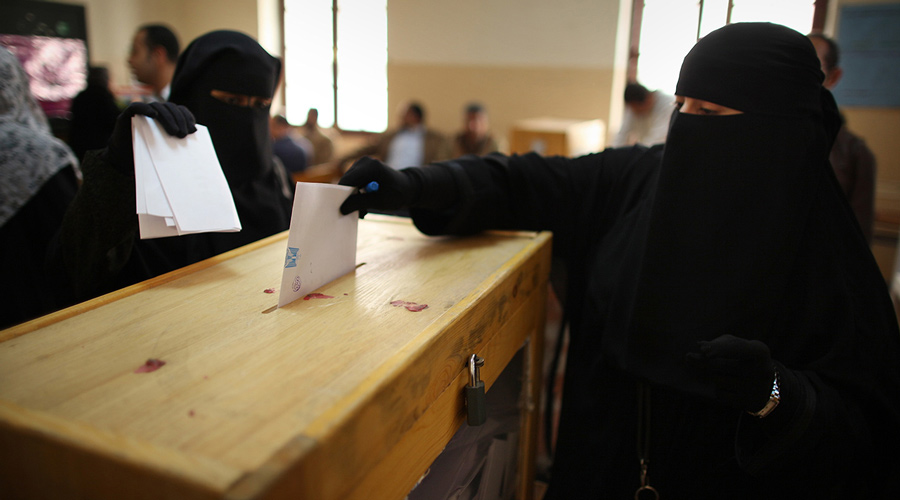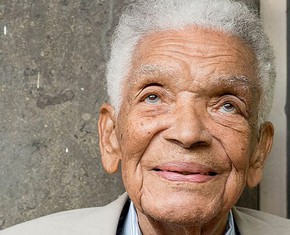The views expressed in our content reflect individual perspectives and do not represent the authoritative views of the Baha'i Faith.
Salary disparities between males and females persist across the world. The UN says that globally, women make 76 cents for every dollar men make. Even in the United States, where gender equality has advanced quite a bit in recent decades, the pay gap remains significant:
According to the White House, full-time working women earn 77% of what their male counterparts earn…. However, our own estimate, which is based on hourly earnings of both full- and part-time workers, finds women earn 84 percent of what men earn.
…for young women, the wage gap is even smaller… the estimated 16-cent pay gap today has narrowed from 36 cents in 1980….
In spite of its narrowing, the gender pay gap persists…. Even though women have increased their presence in higher-paying jobs traditionally dominated by men, such as professional and managerial positions, women as a whole continue to work in lower-paying occupations than men do. And some part of the pay gap may also be due to gender discrimination, – Eileen Patten, On Equal Pay Day, key facts about the gender pay gap, April 14, 2015, published on the Pew Research Center website
The President and CEO of the Women’s Foundation lists three gaps that American women face: Pay, Opportunity, and Leadership. As to the latter, she noted that:
Despite now earning a majority of college degrees, women only make up about 5 percent of CEOs….
Women are largely underrepresented in elected office, in the C-suite and on boards and commissions; all places where policy decisions are made. A research study commissioned by the Women’s Foundation with the University of Kansas in 2014 found barriers to women’s civic engagement. Women who have not served feel they don’t have the knowledge and expertise needed, and feel less confident in their leadership skills. It also showed that many women weren’t aware of the opportunities to serve in local government and that they’d be more likely to serve if asked. – Wendy Doyle, Instead of Commemoration, Let Women’s Equality Day Be a Call to Action, August 26, 2015.
In the Middle East, equal pay for equal work is one of the least of women’s concerns, but advancement has taken place in some countries.
In Saudi Arabia, where women just voted for the first time ever, the proverbial ceiling faced by working women is brick rather than glass—but in some ways that makes it easier to tackle, women say:
“You can see it, you can talk about it, you can prove it is undermining you. Then you can find ways to go through it or around it,” said the head of the Saudi Society for Rehabilitation and Education, a charity for disabled children. “Eventually we are going to break it,” she told Reuters. While Western critics focus on rules which stop women from driving or appearing unveiled in public, she is one of the many educated Saudi women who have been quietly chipping away at the social and cultural barriers which hold her back.
“This has enabled women to achieve things which were unheard of in the conservative Muslim kingdom 10 years ago. They have become bankers, business tycoons, architects, television presenters and Internet engineers.
“In the field of medicine — which has always been more accessible to Saudi women — female doctors now head hospital departments, with male colleagues working under them.
“Successful women say much still needs to be done to help others overcome the disadvantages of strict social segregation and laws requiring them to have a male sponsor to set up a business. But they maintain the barriers are cultural, rather than religious, and will be eroded naturally as Saudi society develops. The women are all committed Muslims and say that local tradition — not Islam — is the obstacle they face.” – Mariam Isa, “Career Women Slowly Breaking the Cultural Barriers,” April 18, 2003, Reuters News Service.

Saudi Arabian women register to vote for the first time
The Middle East has the lowest percentages of women in the workplace. Part of the reason is cultural. This holds true also for other nations:
Japan and South Korea have unusually low female participation. This also gets at cultural norms, though they’re somewhat different. Japan and South Korea are still getting over legacies of rigidly proscribed, Confucian-linked gender norms, which make it tougher for women to be perceived as equals in the workplace. Revolutionary China worked very hard to overturn these norms, to partial but substantial success, which you can also see here. And there are non-Confucian countries with histories of gender inequality that see a similar outcome, for example in Italy. – Max Fisher, Where Women Work, and Don’t: A map of female labor force participation around the world, February 13, 2014, The Washington Post.
In India, marital status plays a role in who is employed. Here again, the women’s rates are lower than the men’s. According to India’s National Family Health Survey for 2005-2006:
Women who are divorced, separated, deserted, or widowed are much more likely to be employed than currently married women; never married women are least likely to be employed. For men, employment varies little between those who are currently married and those who were formerly married; however, never married men are, as expected, less likely than ever-married men to be employed. Nonetheless, the proportion of never married men who are employed is almost twice as high, at 66%, as the proportion of never married women who are employed, at 37%.
The Baha’i teachings tell us that:
History records the appearance in the world of women who have been signs of guidance, power and accomplishment. Some were notable poets, some philosophers and scientists, others courageous upon the field of battle.
…it will come to pass that when women participate fully and equally in the affairs of the world, when they enter confidently and capably the great arena of laws and politics, war will cease; for woman will be the obstacle and hindrance to it. This is true and without doubt. – Abdu’l-Baha, The Promulgation of Universal Peace, p. 74, p. 134.
Next: Stopping Violence Against Women
You May Also Like
Comments

















She says sex discrimination is *not* the primary reason women get paid less then men. The discrepancies are often explainable by a variety of other factors.
http://freakonomics.com/podcast/the-true-story-of-the-gender-pay-gap-a-new-freakonomics-radio-podcast/